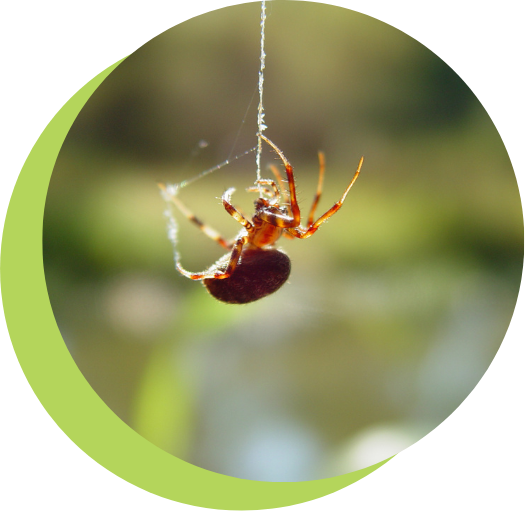In the United States, some 31% of us suffer from Arachnophobia, the fear of spiders. That is over 100 million people. Some scientists believe that women make up about 90% of those affected. A Gallup Poll in 2001 showed women with a 2.5 times greater fear than men. These numbers reflect more than the average woman with a broom in hand, swinging wildly away. We know they are creepy, some are hairy, and some highly venomous, but could the fears be more than that? Could women be born with a greater fear of spiders?
The only way to test the theory was on babies. So, at the Max Planck Institute for Human Cognitive and Brain Sciences in Germany, scientists had 6-month-old babies seated calmly in their parent's laps. They then showed them pictures of spiders, snakes, flowers, and fish. Their pupil dilation was measured to indicate their fight or flight response. The flower picture, which was the least threatening, had an average dilation of .03mm, while spiders garnered an average of .14mm. A follow-up study showed that by 11 months old, only girls showed a negative facial response. The results that we have an innate fear of spiders and that women are hard-wired to fear them more than men.
Here in Texas, there are almost 900, yes 900 hundred species of spiders, including the two that are poisonous to us. With that many different varieties, it's no doubt that there are some tall tales about arachnids. We are taught that the Black Widow got her name because she eats her unlucky mate. The Red Widow doesn't have to work that hard. The male lunges himself into the female's mandibles, and if she doesn't eat him on the first attempt, he keeps trying until she does. Then there is one of the most easily recognized arachnids in Texas, the tarantula. While their sting is less than that of a bee, they can fling tiny hairs to keep predators at bay.
In Texas, we like things big, and in our spider world, the biggest is the Carolina Wolf. These creatures can reach a leg span of up to 4 inches. If you come across one, you may be amazed to see them run at a speed of 2ft per second. The largest family of spiders we have is the Jumping, with almost 150 species. With its black and white striped hind section, the Zebra is a commonly seen species here. Jumping Spiders don't spin webs to catch their prey. They pounce on their victim with a jump that can be up to fifty times their body length. On the opposite end of the web-generating spectrum, we have the Giant Lichen Orb-Weaver. Their sticky traps can reach diameters of eight feet.
If spiders have you feeling trapped, call the company trusted in Jacksonville and the surrounding area, Tranquility Pest Control. The quality of our work keeps our customers happy and pest-free. Contact us for a free estimate.

